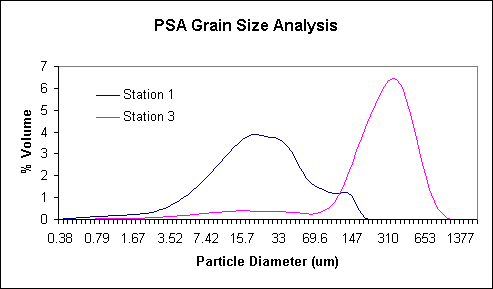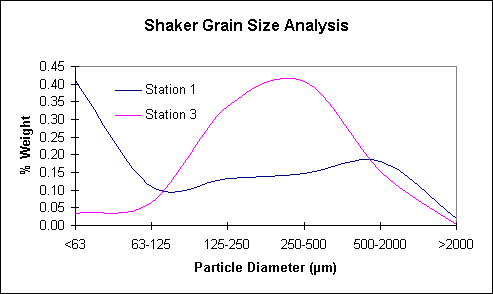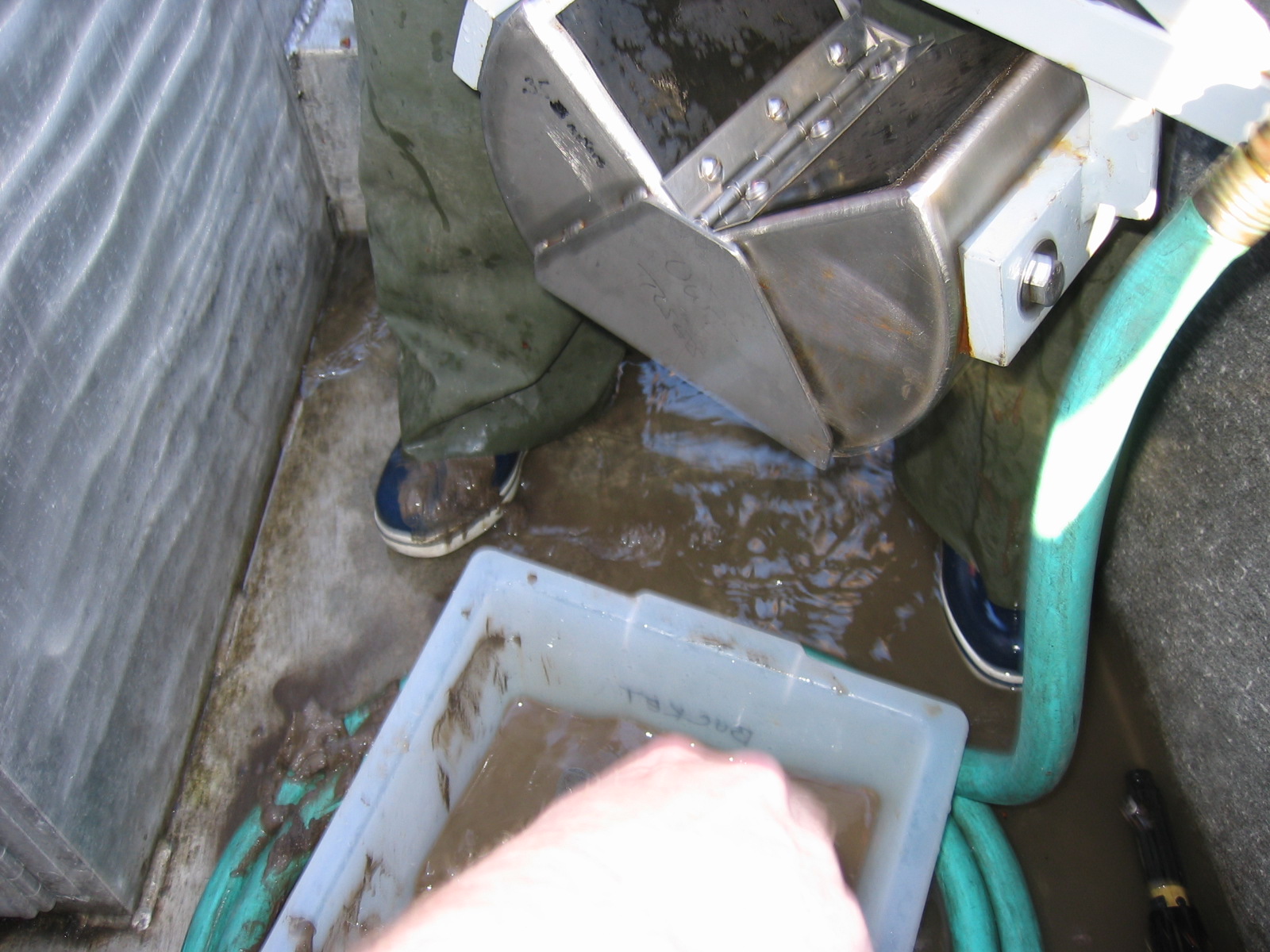Sediment samples showed a higher
percent volume of clay and silt particles at station 1, likely because station 1 was in
a protected bay with lower tidal flow, allowing settling of the lighter fine-grained
sediment. The same trend was noted for percent weight distribution at station 1,
which also showed the largest percent weight of fine-grained sediment twice that of any
other particle size category.
Station 3 sediments
were composed mostly of medium to large grained sand particles. likely
because the grab was taken to the west of station 3 ( 47° 22' 53.91 N 122° 28' 48.51 W)
closer to shore where heavier grains tend to settle out. This is the last sample that
the ponar was able to make before it was lost to the depths due to a poor knot (I'm not saying
any names, ANDY). The larger particle
sizes found at station 3 may also be a product of being in the outer bay of
Quartermaster Harbor where the sediments are more exposed to the currents of
the Main Basin allowing finer-grained sediment to remain in suspension. Past
research has shown variable grain size distributions between clays and sand
within the center of Quartermaster Harbor (Sorensen 2005, unpublished data).





